By: Ashley Rivas
Power up your SNES Classic (or, if you’re older, your actual SNES) and pop in Final Fantasy 3 (or, if you live in North America, Final Fantasy 6). Look at those pixels. Absorb their finite glory, and gorge on them and the beautifully rendered chips of Nobuo Uematsu’s tunes. It’s no wonder that nostalgia for this style of gaming is so high. Can you blame developers for crafting homages, love letters, and testaments of worship towards the games that inspired them to create? The team over at Took 2 Long Productions is no different; they’ve been smitten with these games for a long time, and have been making their own fan games in this vein for just as long.
So what makes Mender’s Strife different? It’s theirs! It’s their first major outing as a team with their own unique concept, and they’ve dug deep to create a ground-up game with their own 8-bit stamp on it (if you don’t believe me, just the interview I did with them. I mean, damn; it’s right there in the title. It’s an 8-bit fantasy.
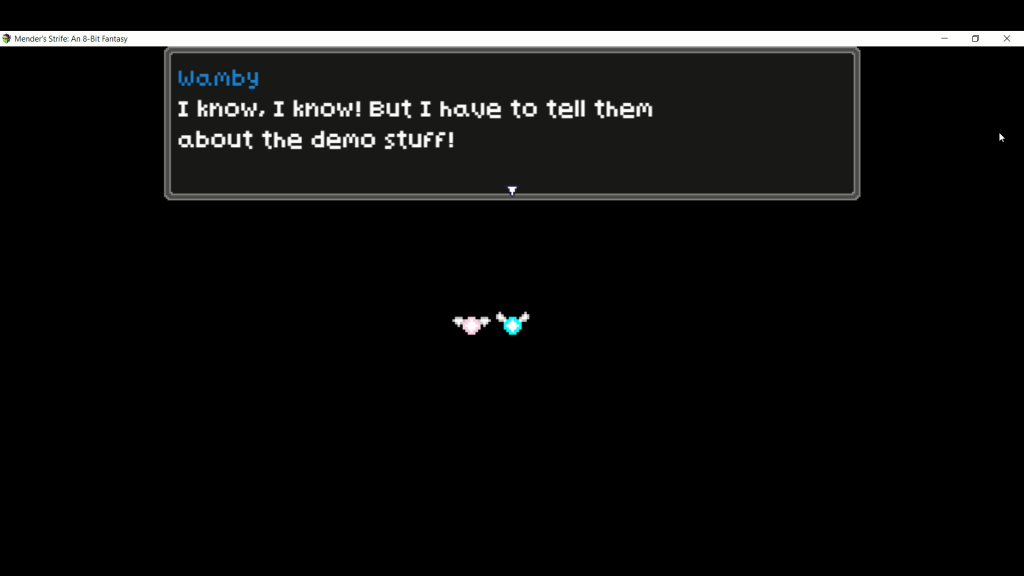
These lovely fairies let you know that it’s a demo.
Background
This is the second time I’ve played through this demo. The first encounter was at SIX, where I was a juror who got the fantastically crazy opportunity to play different games from a ton of talented indie devs. I was ecstatic to see a game using the RPG Maker engine, and loved the ideas that they conveyed with their tiny little specks on a screen.
They’ve made some tweaks since the first time I played this, and this is a great chance to get to taste what they’re working on.
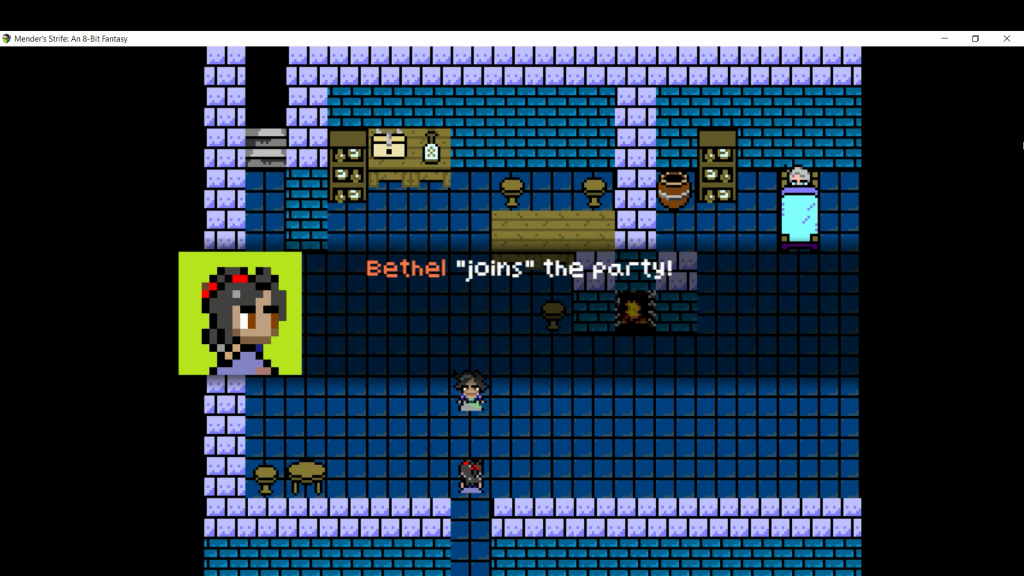
Oh, Bethel. I DON’T LIKE YOUR SASS.
Full disclosure: this is a demo, and because of that, I don’t feel comfortable grading it like a full game. There are considerations that get made for demos. They’re a sample, and aren’t meant to reflect the whole game; they’re a taste of an in-progress idea, and that’s the mantra for this review.
So let’s cut the crap and jump in, because this is a demo that deserves to be dissected!
Narrative
Mender’s Strife places the main character, Marah, in the middle of a world that’s being ravaged by some kind of epidemic. It’s not clear exactly what it is; you know it’s deadly, and you know that people known as Menders are trying to help keep it at bay. Marah clearly turned her back on that calling despite one heck of a biological resume, but refreshingly, there isn’t angst there. We don’t get hours of agonizing sob-filled backstory. She’s not a miserable jerk who hates anyone who mentions her potential calling. She’s a normal person who feels a little weird about it, but mostly just wants to do what she actually feels good doing, even if she doesn’t know what that is yet.
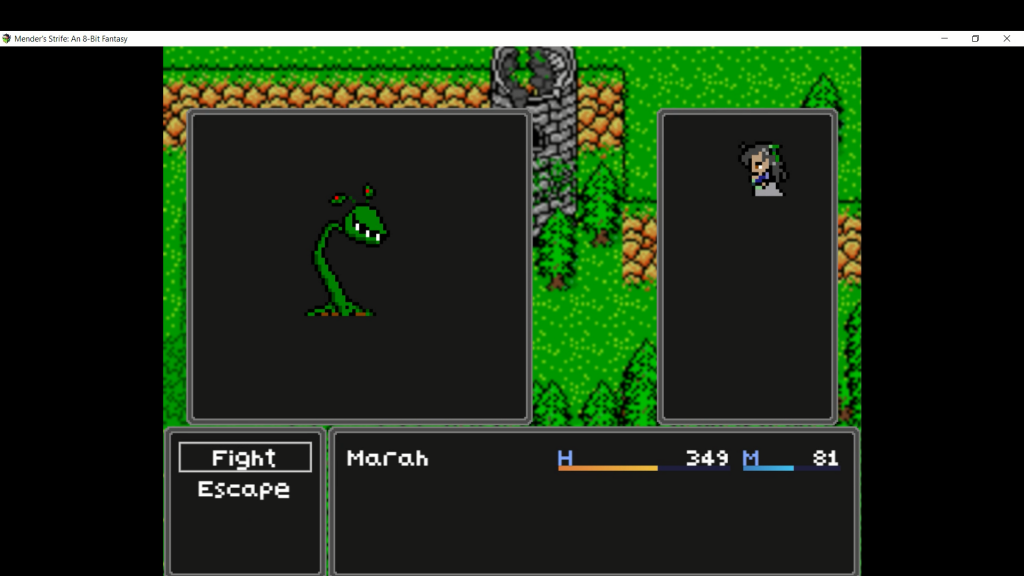
She fights things with a stick. That’s badass.
Marah needs some medicine for her Grandma, and because the world sucks, pirates stole the precious medicinal MacGuffin. Marah, like a crazy person, decides to track the medicine down to the source. Hijinks ensue (that I don’t want to spoil), but Marah finds out that she does have some kind of power. If you’re familiar with the Lancet ability of Final Fantasy X, it’s kind of like that; she absorbs a power from an enemy, and can use it as her own now. It makes her formidable, though she doesn’t pack quite the same punch as the other party member, Wilson. He’s a freaking nut, and the reference to another avocado faced nut is striking.
The main issue I have with the narrative is the balance between the very meta jokes and the serious nature of the world’s main conflict. The humor doesn’t always fit with the rest of the game, and having it be so fourth-wall breaking can be a little jarring in such a concentrated dose. It’s something the team and I talked about in our interview, and while I want to mention it purely for posterity, it is something that they intend to even out with a fuller game. I’m glad there’s comedy and humor present; it grounds the characters and gives you some sense of believability, like they’re actually people who act like people do. When that humor gets spread out with a longer, full length game that spreads out the darker tone of the narrative, it’ll seem less out of place and more in balance.
Narrative grade: 3.5/5. Engaging, and will be damn near perfect when humor is balanced.
Gameplay
There’s something to be said for simplicity, and this game holds to traditional JRPG systems very clearly. The battle system is turn based, and each character has an ability or two that can give the player a bit of strategy to employ. Honestly, it’s that simplicity that works so well for the demo. You feel like this is the beginning of the story, like you’re just getting a taste of the kinds of abilities that will show up later.
Coupling that with the very minimalistic quest system will definitely prove divisive for people who are more accustomed to thorough quest tracking. An NPC with a quest will have a dot above them, which changes colors based on where you’re at in their quest. Is it done? That shit’s blue, turn it in. Is it in progress? Red, bitches—get to work!
It’s so simple, and there’s no running list of what you’ve got to actually do. It’s reminiscent of older games, which is the intent from the devs, but it’s not going to make anyone who loves more modern tracking happy. I only had one to do in the demo, but honestly, even if there were 20 in one village, the colored dots and the hints from the dialogue are more than sufficient. It’s not unreasonable to expect a player to do a bit of the legwork. And if that upsets you as a player, I suggest playing a game that involves no actual play. THEY EXIST.
Gameplay grade: 3/5. Simple, but well built.
Aesthetics
This is where I think Mender’s Strife succeeds at full capacity. The team has taken an existing engine and has pumped it full of their own assets, from art, to dialogue, to music. The 8-bit stylization reads well, and the world feels like it makes sense. Trees look like foliage, and the players have outfits that read like their actual intended designs.
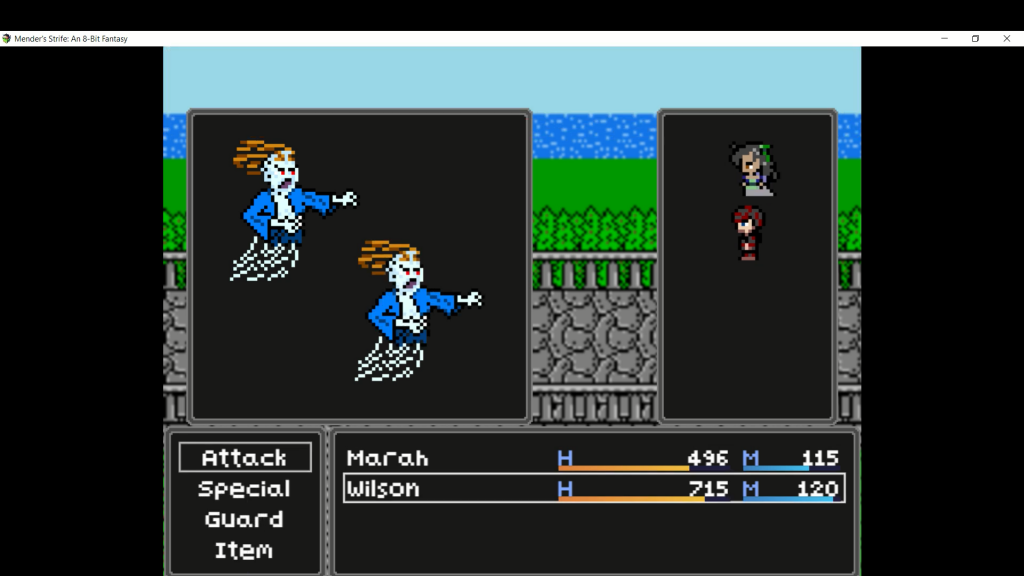
These ghosts, and their vicious side eye, are some of my favorite sprites.
The music is one of my favorite parts of this game, and I couldn’t get past how much I enjoyed listening to some of the songs at length. The intro areas have wonderfully sweet, upbeat themes, but even the pirate castle takes the simplicity of a chiptune and layers it enough to create tension. Go to BeepBox.co and tell me how easy it is to make a song that both makes you uneasy and also sounds good. I mean, I can do the uneasy part, but it sounds like crap. The music in Mender’s Strife does not.
Aesthetics grade: 5/5. Unique, intense, and full of heart.
Conclusion
This is a short demo, clocking in around 45 minutes for me with some excess leveling in certain areas. It never felt boring, and gave me just enough of a taste to keep updated and wait for the full release. The team is working towards an early 2019 release date for the game, and Demo 2.0 is scheduled to release next month with some new ability updates.
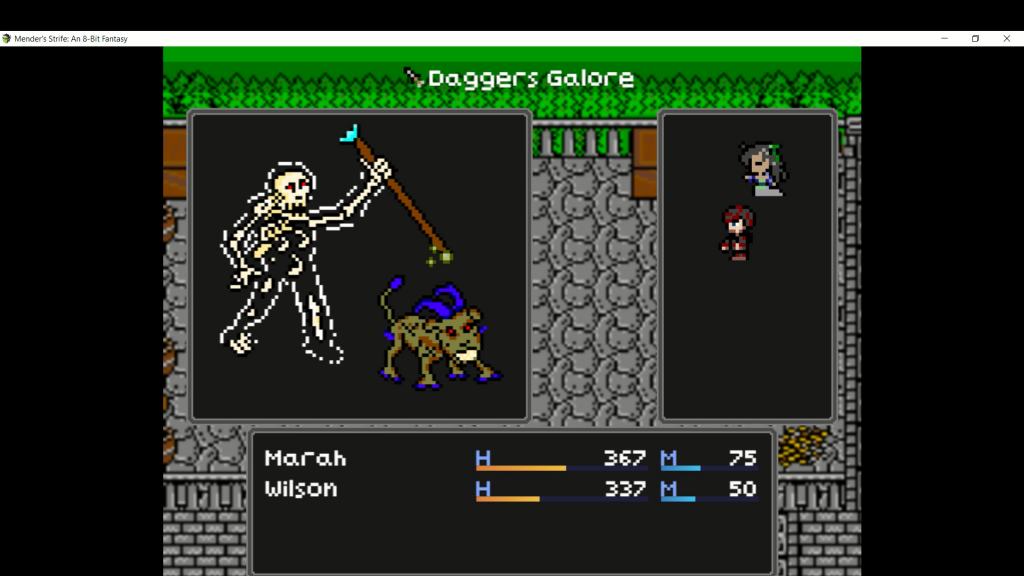
Fingers crossed that Necrocrombie comes back!
If you’re a fan of classic JRPGs, or if you’d like to soak up some grade A nostalgia, give the demo a try! If you’re curious but unfamiliar with the genre, try it, but be prepared for a stark lack of modernity. Which, in this case, is freaking awesome.
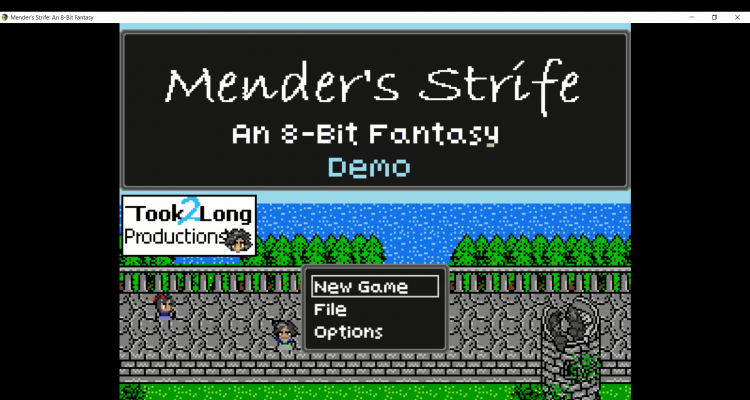

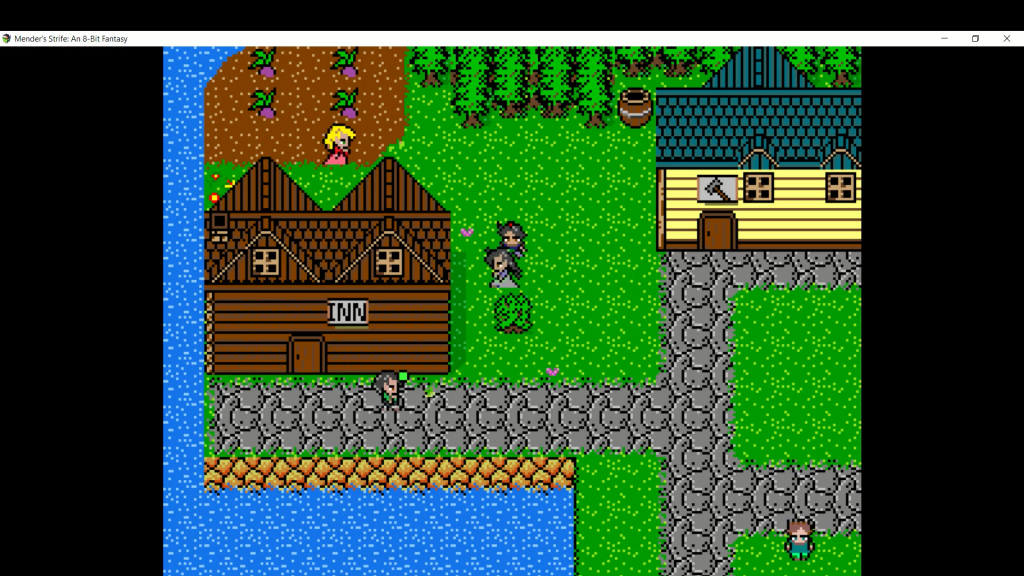
No Comments on "8-bit indie fantasy land: Mender’s Strife review"